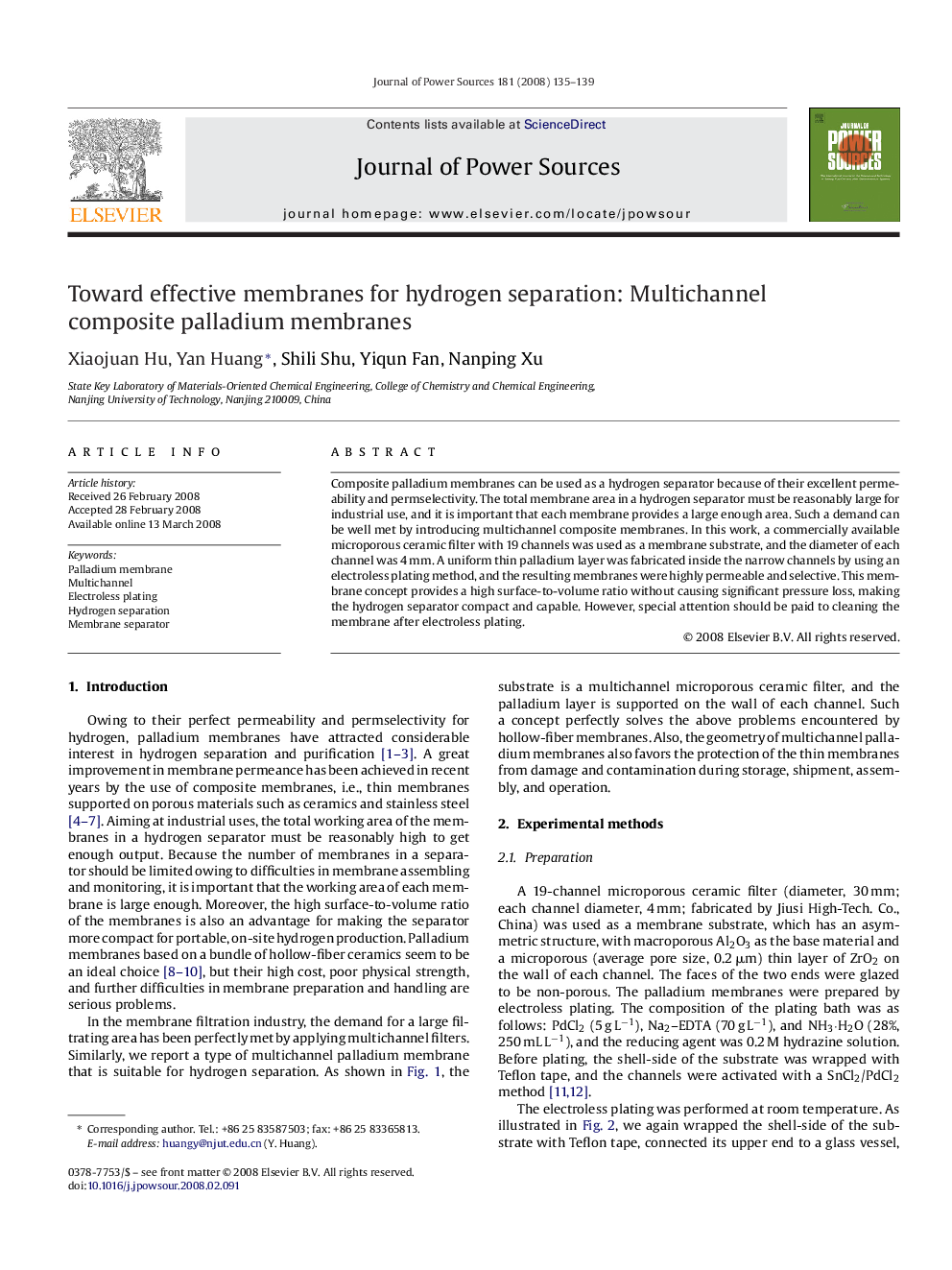| Article ID | Journal | Published Year | Pages | File Type |
|---|---|---|---|---|
| 1285491 | Journal of Power Sources | 2008 | 5 Pages |
Composite palladium membranes can be used as a hydrogen separator because of their excellent permeability and permselectivity. The total membrane area in a hydrogen separator must be reasonably large for industrial use, and it is important that each membrane provides a large enough area. Such a demand can be well met by introducing multichannel composite membranes. In this work, a commercially available microporous ceramic filter with 19 channels was used as a membrane substrate, and the diameter of each channel was 4 mm. A uniform thin palladium layer was fabricated inside the narrow channels by using an electroless plating method, and the resulting membranes were highly permeable and selective. This membrane concept provides a high surface-to-volume ratio without causing significant pressure loss, making the hydrogen separator compact and capable. However, special attention should be paid to cleaning the membrane after electroless plating.
